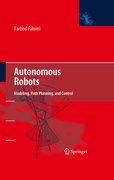
It is at least two decades since the conventional robotic manipulators have become a common manufacturing tool for different industries, from automotive topharmaceutical. The proven benefits of utilizing robotic manipulators for manufacturing in different industries motivated scientists and researchers to tryto extend the applications of robots to many other areas by inventing severalnew types of robots other than conventional manipulators. The new types of robots can be categorized in two groups; redundant (and hyper-redundant) manipulators, and mobile (ground, marine, and aerial) robots. These groups of robots,known as advanced robots, have more freedom for their mobility, which allows them to do tasks that the conventional manipulators cannot do. Discusses the application of Advanced Robots (redundant and hyper-redundant manipulators, andground, marine, and aerial robots) with examples such as robotic helicopters for surveillance, aerial photography, farm spraying, high-end cars that park themselves, and robotic vacuum cleaners INDICE: Introduction to advanced robots.- Redundant manipulators.- Hyper-redundant manipulators.- Obstacle avoidance.- Control of manipulators.- Mobile robots.- Autonomous surface vessels.- Autonomous helicopters.
- ISBN: 978-0-387-09537-0
- Editorial: Springer
- Encuadernacion: Cartoné
- Páginas: 600
- Fecha Publicación: 01/11/2008
- Nº Volúmenes: 1
- Idioma: Inglés
